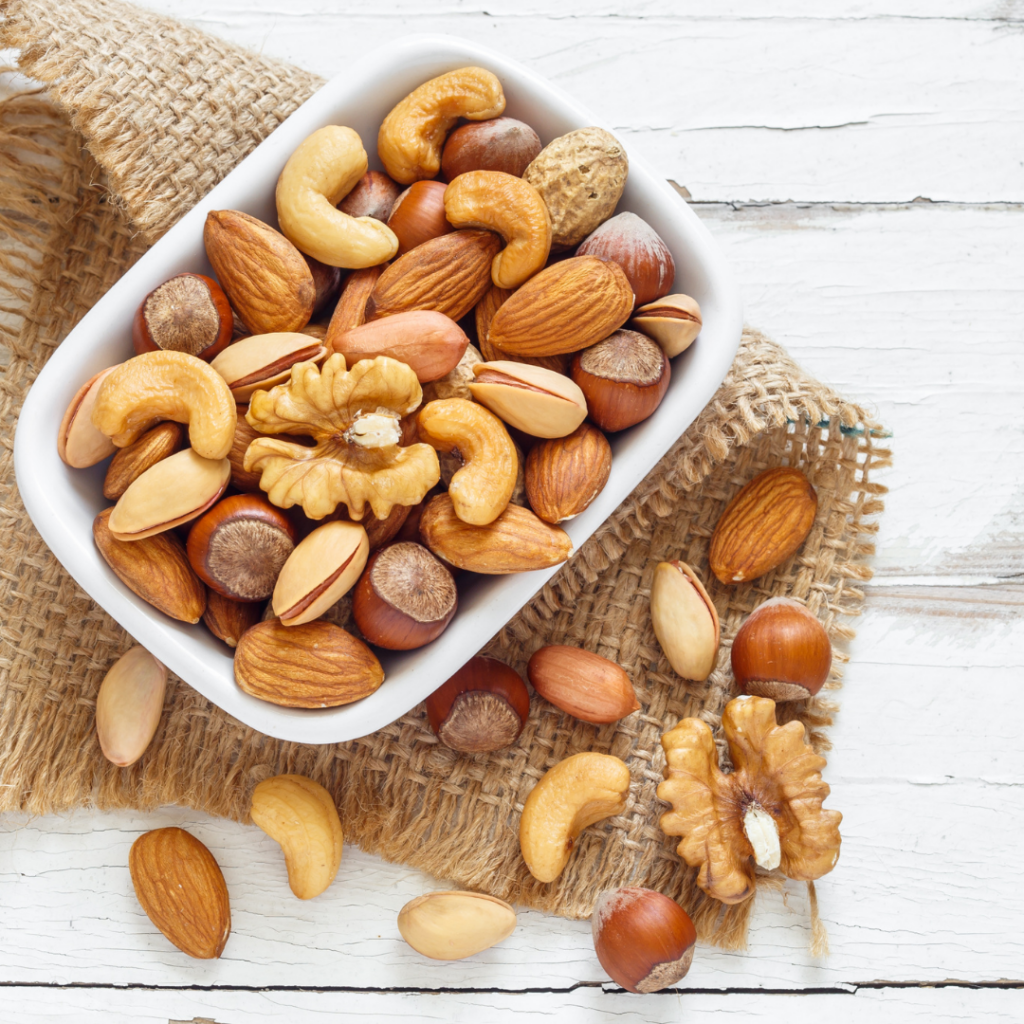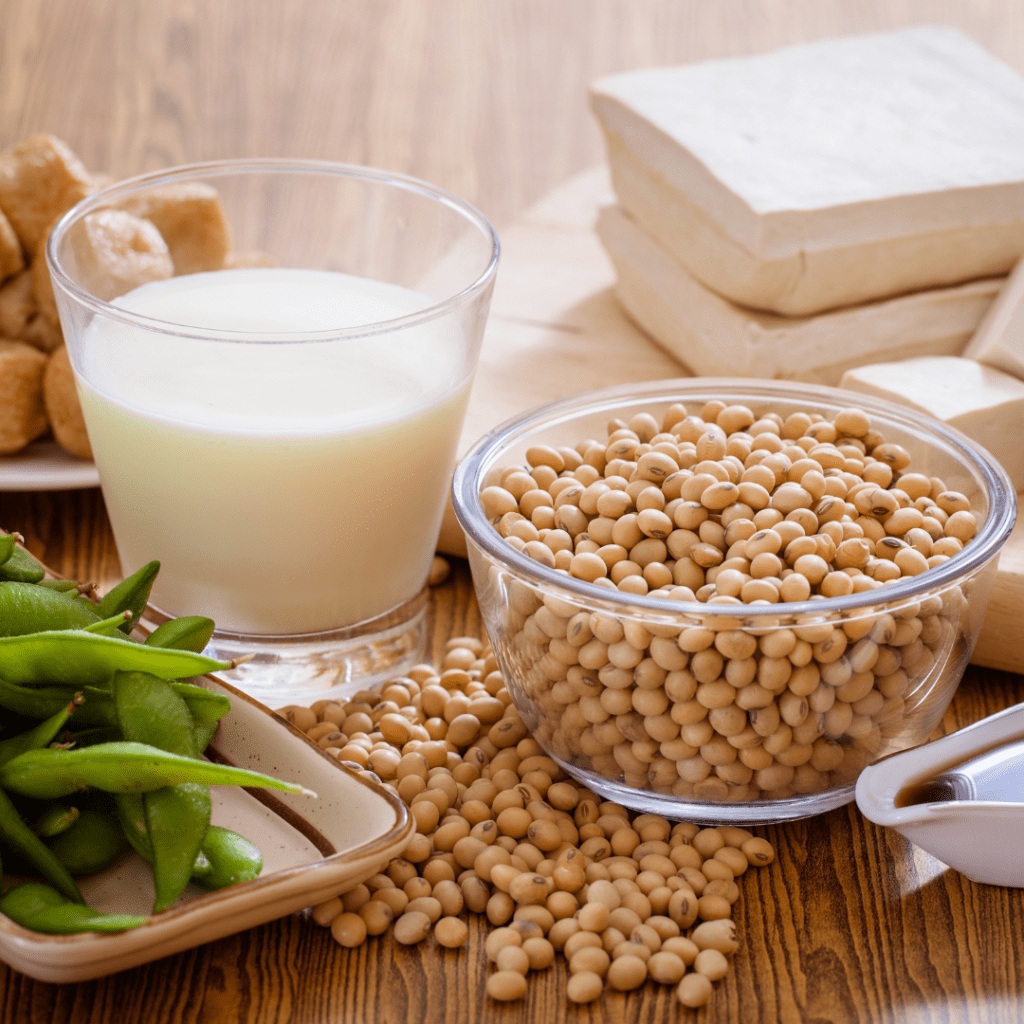**This post may contain affiliate links, please view our disclosure policy for more details.
Beans are a highly nutritious, versatile, and affordable food I recommend offering to your baby sooner rather than later. Rich in protein, fiber, and iron, beans are an ideal food for babies.
Understandably, you may have questions or concerns about how to safely serve beans, which beans you should choose, and whether or not they’ll cause an upset tummy for your baby.
In this blog, we’ll educate you on the many benefits of beans for babies, resolve any concerns you may have about offering them, and provide you with tips and tricks on how to cook, store and safely prepare and serve them for baby-led weaning. You’ll also get creative ways to integrate beans into your baby’s family meals, as well as a super simple and delicious recipe for incorporating black beans into your baby’s diet right from the start. So, let’s get started!
PS – If you’re looking for more help with starting solids with your baby, and are ready to feel confident in knowing what to feed your baby and how to do it safely, be sure to check out our Baby Led Feeding online course for everything you need to know! We’ll walk you through starting solids with your baby, step-by-step, using purees or finger foods (whichever method you feel comfortable with to start). Don’t spend this important milestone stressed out and worried – actually enjoy meals with your baby and know you’re setting them up for the healthiest start instead!
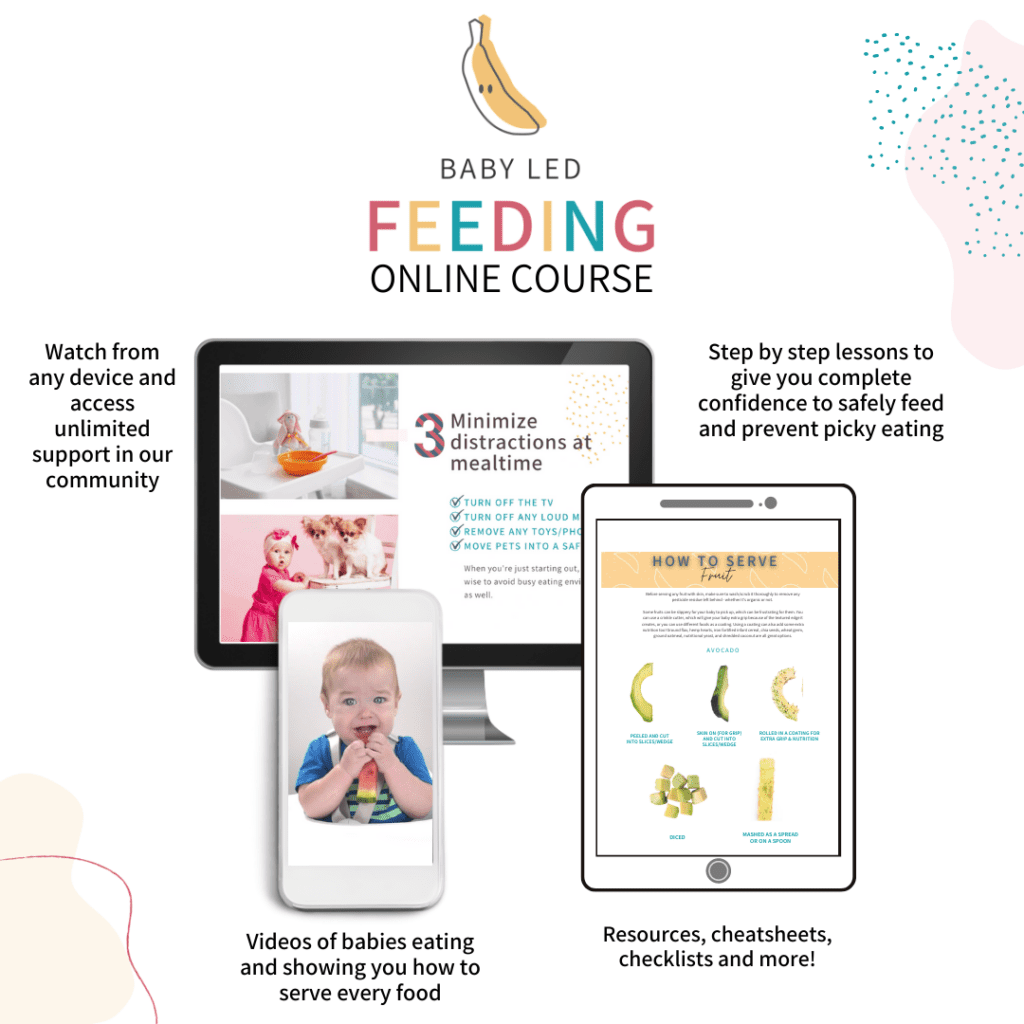
Can my baby eat beans?
Absolutely!
We recommend introducing beans to babies around 6 months of age, assuming they show all the signs of readiness to start solid foods.
Why? Because beans are nutrient-dense, meaning they’re a great first food for your baby. They’re an excellent source of protein, iron, fiber, and other important nutrients babies need early on to support their growth and development.

As you may already know, there are various types of beans you can introduce to your baby, such as black beans, kidney beans, pinto beans, and the list goes on! And although beans are not a top allergen, there’s still a small possibility your baby could have a reaction – plus, it may only be to certain beans, and not necessarily them all.
Are beans a choking hazard for babies?
Beans can be considered a choking hazard (low risk) because of their small size and rounded shape. This is even more so when beans are offered in their raw form or undercooked. To reduce the risk of choking, cook beans until they’re very soft and easily squishable between your thumb and forefinger. To remove any round shape, you can lightly squish beans to flatten them slightly before offering them to baby.
How do I safely serve beans as a baby-led weaning food?

Since we recommend introducing beans to your baby soon after they start solids around 6 months old, let’s discuss how you can serve them safely!
Most beans can be modified and served safely to babies right from the start, whether that be in the form of a thick purée or spread on larger finger foods. You can serve beans to baby throughout different texture phases – phases 1 (soft, thick foods), 2 (soft, very lumpy/minced solids), and 3 (lifelong stage) of My Little Eater’s signature Texture Timeline™! You can use our Texture Timeline™ tool to start with easier textures of purees or finger foods and work your way up to more advanced textures at a pace that works for you and your baby.
Our Texture Timeline™ video library inside the Baby Led Feeding online course allows you to search for any food and see exactly how to serve it based on different phases (difficulty levels) of the Texture Timeline™. You get to see how babies should be served the food based on your baby’s stage of development, and get tons of nutrition information on each food, plus allergy info, fun facts, recipes, and more! Get access to the video library here.
Serving beans as a puree

Blend or hand-mash cooked, soft beans and offer to baby on their own or mixed with other soft foods like mashed sweet potatoes, Greek yogurt, or avocados for added nutrients and flavor. You can let baby dig into the bean purée with their hands or you can offer it on a preloaded spoon.
Be sure to check out our delicious black bean spread recipe at the end of this blog!
PS – you can find many more family and baby-friendly bean recipes in our 60 Day Baby Led Feeding Meal Plan!
Beans as a finger food
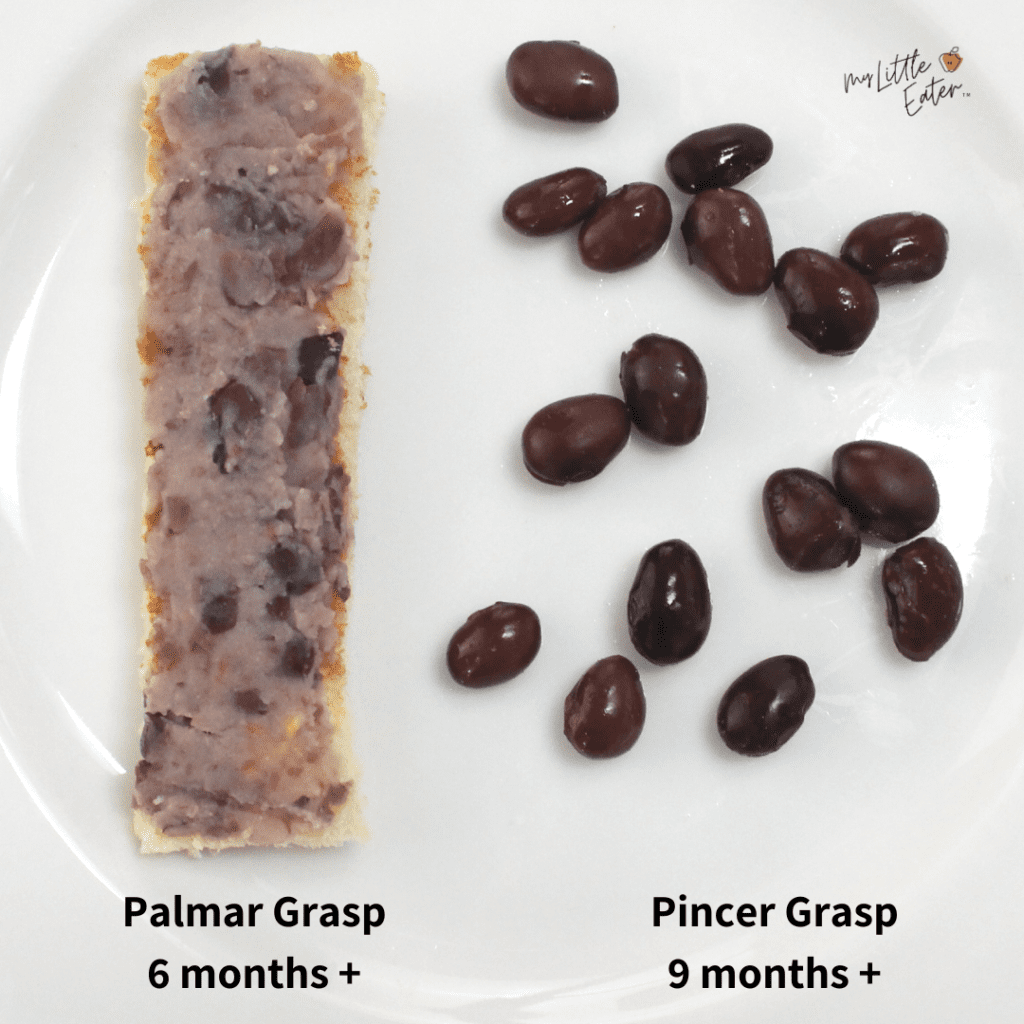
Beans will be difficult for baby to pick up with their fingers until they have mastered their pincer grasp. Instead, you can use toast or a rice rusk as a vehicle for mashed or puréed beans. Toast cut into finger-like shapes will be easier for baby to pick up and hold using their palmar grasp.
Beans can also be easily incorporated into homemade burgers or fritters. Simply cut them into finger-shaped strips and allow baby to self-feed. Check out our 60 Day Baby Led Feeding Meal Plan for a tasty bean burger recipe.
Once your baby has developed their pincer grasp, typically around 9 months of age, you can offer soft, cooked beans on their own that have been flattened to reduce any risk of choking.
What are the health benefits of beans for babies?

While beans of different varieties (black beans, kidney beans, pinto, navy beans, etc.) have slightly different nutrition profiles, they all make wonderful, nutrient-dense additions to your baby’s diet. They’re rich in essential nutrients, vitamins, and minerals that can support baby’s overall health like magnesium, potassium, vitamin K, thiamin, phosphorus, zinc, folate, antioxidants, and more (1,2).
Specifically, most beans are a great source of plant-based protein and an excellent source of fiber and iron.
Iron in particular is an essential nutrient for babies. Babies are born with iron stores since it can’t be synthesized by the body, however, these stores begin to deplete at around 6 months of age. To prevent babies from developing iron deficiency, ensure they’re being served a high-iron food (like beans) twice a day, when possible.
Another factor to keep in mind is that iron found in beans is non-heme (which isn’t as well absorbed in the body compared to an animal source of iron). The good news is you can pair beans with a vitamin C source like peppers or lime to help to increase the rate of iron absorption. Pairing beans with a vitamin C food source also provides greater variety in flavor for your little one to try – a win-win!

Now, you may have heard or read about negative health claims regarding beans containing compounds like anti-nutrients or lectins. Let’s discuss the science behind these claims.
Do I need to worry about lectins in beans?

There are several compounds classified as anti-nutrients, lectins being one of them. Anti-nutrients are naturally occurring in animal and plant-based foods, and the reasoning behind the name is that they can block the absorption of certain nutrients (3).
Eating foods with a high amount of active lectins is rare (4). Lectins are most potent in their raw form, and foods containing them are not typically eaten raw (like beans) (4). Soaking and cooking beans will help to break down the lectins that are present.
Although some foods like black beans may contain small amounts of anti-nutrients after processing and cooking, the health benefits of eating these foods far outweigh any potential negative nutritional effects (3). Variety is key and will help offset minor losses in nutrient absorption caused by anti-nutrients (3).
The bottom line is lectins are harmless for most healthy people, especially when consumed as part of a balanced diet.
Will cooked beans make my baby gassy?

In short, yes – but this doesn’t mean you should avoid giving your baby beans, as you now know, they pack a powerful punch when it comes to offering essential nutrients. Let’s discuss why beans cause gassiness and how to reduce excessive gas for your baby.
Beans have exceptional fiber content, which is excellent! But they do contain a specific type of complex sugar called oligosaccharides, which is a non-digestible, fermentable fiber that can cause gas (5). Gas is produced during the process in which the fiber is fermented. But, this can actually be a good thing because it promotes the growth of healthy gut bacteria (6). This, in turn, can help prevent constipation and digestive issues, while promoting healthy bowel movements. Aka – beans can help your baby poop!
Although gas is normal and expected with certain foods, you don’t want to cause baby discomfort from excessive gas. When you do introduce beans to your baby, it’s best to do it gradually, with small portions to start, to minimize discomfort from excess gas. Keep offering beans regularly to your baby in quantities that baby can tolerate without discomfort. The truth is, the more often you eat beans and continue to eat them, the less often you’ll experience digestive discomfort (7).
What should I look for when buying beans for baby?
You can offer any kind of bean to your baby…kidney beans, black beans, white beans, etc…they’re all great, nutrient-dense options. When buying beans, you’ll typically be choosing between canned or dried beans.

The healthiest choice is to start with dried beans, as they typically have no added salt or any other unnecessary additives. You can cook them according to their package instructions (just make sure that whole beans are fully cooked, so they’re easily squishable) but they usually require many hours of soaking (generally overnight) before cooking. However, most of us don’t always have the time or forethought to do this!
A much more convenient option is canned beans, which are totally fine for a quick and healthy option. Just aim to choose canned products stored in a BPA-free liner and ideally, also PVC-free lining as well. I also recommend choosing low or no-salt versions, if possible. If you do have a higher salt version, rinse the beans under water once or twice to remove some of the excess salt and residue before offering it to your baby – and voila! Ready to serve without having to cook anything or think about it ahead of time!
How to prepare beans and add them to your baby's meals

Canned beans require very little, if not no preparation. They’re extremely convenient to use as is when you need to throw together a quick meal, however, soaking them before serving can be beneficial. In fact, cooking with wet high-heat methods like boiling or stewing, or soaking in hot water for several hours, can inactivate most lectins (those anti-nutrients discussed above). Soaking also reduces the amount of gas-producing fiber, making the beans easier to digest (4).
Dried beans, on the other hand, absolutely require soaking for several hours to soften before cooking and offering them to your baby.
Follow these steps when soaking beans:
- Place the beans in a bowl and cover them with water. Beans can expand while soaking, ensure you choose a bowl that is big enough.
- Soak the beans for at least 4 hours minimum. If you can remember to do so, soak them overnight – the longer the better! You can leave them on the counter while soaking, but if you soak for more than 8 hours, it’s best to refrigerate them.
- After the beans have soaked for at least 4 hours, drain and rinse the beans thoroughly.
- Cook according to your preferred method.
- Ensure beans are soft and can be squished/flattened before serving to baby.
Storing beans: after you prepare beans by soaking them, they’re easy to store and great to keep on hand to bump up the nutritional value of quick meals! Refrigerate in an airtight container for up to 5 days.
Easy and creative ways to incorporate beans into baby-friendly family meals

Beans are extremely versatile and can be added to so many different dishes! For the most part, you want baby to be eating the same meals as the rest of the family, which will be beneficial for exposing baby to a wide variety of essential nutrients, textures, and flavors. To learn how to modify your own family meals safely, check out our blog on how to easily make family meals baby-led weaning friendly, here.
Let’s explore some delicious options for incorporating beans into your baby-friendly family meals:
- Homemade purées and bean dips
- You can boost the nutritional value of your own homemade (or store-bought) purées (or dips) by adding mashed (or blended) beans, like black beans for example.
- Soups and stews, salads, burritos, wraps, tacos, and casseroles
- The possibilities are endless when it comes to adding beans to mixed dishes! I encourage you to modify your own family recipes to include beans – you won’t regret it! When offering mixed dishes to baby, you can easily deconstruct them into appropriate shapes and sizes to make them safe for your baby to eat. Learn more, here.
- Burgers, fritters, and meatballs
- Each of these makes a perfect finger food for babies! You may choose to use a bean-based recipe, or you could simply add them to your favorite meat-based recipes. Whether you add them in their whole form or mashed – they make a perfect addition with their meaty, yet soft texture.
What flavors go best with beans?

Most beans tend to be quite bland and mild, while some beans have a nutty and earthy taste – meaning they pair well with many different food combinations and flavors. If you’re unsure of how to flavor cooked beans for your baby, here are some ideas you can try:
- Add herbs and spices – some options you could try include cumin, chili powder, curry powder, garlic powder, and oregano. Have fun with them! It’s a great way to offer baby variety and flavor.
- Incorporate cooked beans in recipes that include ingredients such as onion, garlic, tomatoes, and other vegetables.
- Prepare beans in different liquids such as broth, lime juice, or homemade sauces of your choice.
Want recipes that are family-friendly AND baby-led weaning friendly? Check out my 60 Day Baby Led Feeding Meal Plan – you’ll get access to over 80 recipes that are perfect for starting solids, and that the whole family can enjoy. This isn’t just a regular meal plan with a list of recipes, you’ll actually be able to follow along with the plan to strategically introduce allergens, advance your baby in textures, and ensure all nutrient needs are being met.

In the meal plan you'll get lots of great bean and lentil recipes for baby led feeding, like:
- Cilantro lentil dip
- White bean burgers
- Garlic white bean dip
- Mexican black bean omelet fingers with avocado
- Baby quesadilla, avocado slices and salsa
- Slow cooker chilli on naan bread
- And so many more!
And as promised – here’s my super easy and delicious recipe for black bean spread! This is a simple way to serve black beans for baby and it’s so versatile! You can offer this iron-rich spread to your baby on toast, rice rusks, tortilla, mixed with hard-to-eat foods like rice, or simply as a black bean puree!
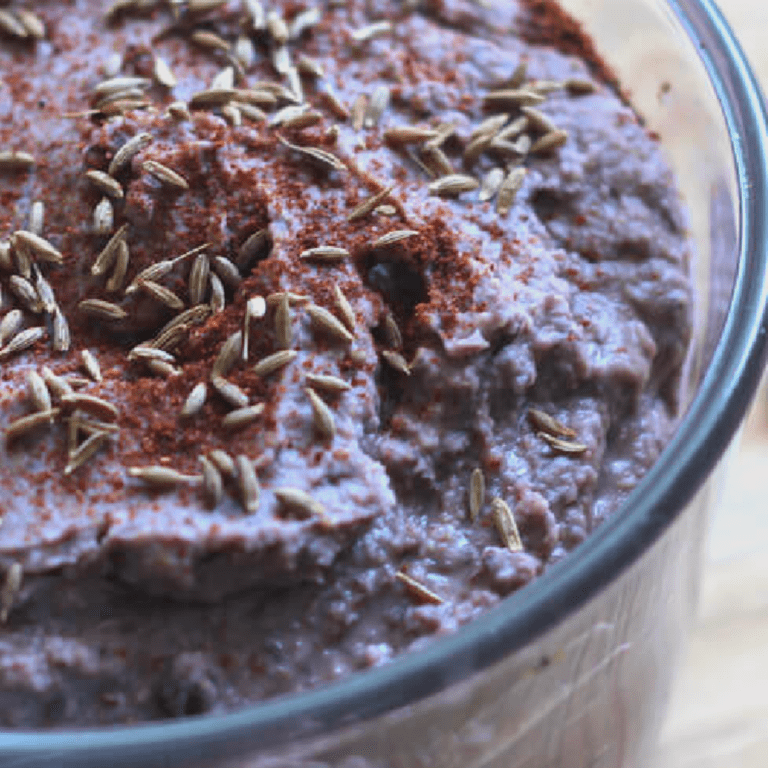
Black Bean Spread
Equipment
- 1 food processor (or blender)
Ingredients
- ⅔ cup black beans (cooked)
- ⅔ tsp cumin
- ⅛ tsp smoked paprika
- 2 tsp extra virgin olive oil
- ⅓ lime (juiced)
Instructions
- Place all ingredients into a blender, or food processor, and blend until smooth.
- Serve to your baby as a puree, mixed in with other foods like rice or quinoa, or as a spread on toast, rice rusks, etc. Enjoy!
Notes
Find this helpful? Pin it to save for later!
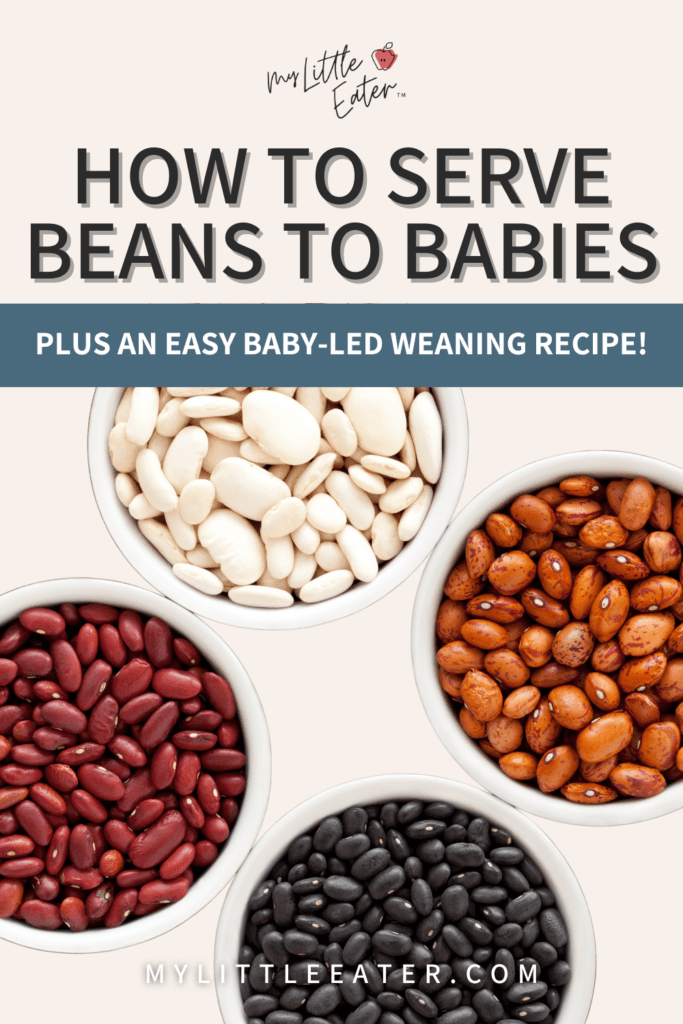
References:
- U.S. Departemnt of Agriculture. https://fdc.nal.usda.gov/fdc-app.html#/food-details/1100378/nutrients
- Feingold, K. R. (2021). The effect of diet on cardiovascular disease and lipid and lipoprotein levels. Endotext [Internet].
- Harvard School of Public Health. The Nutrition Source. https://www.hsph.harvard.edu/nutritionsource/anti-nutrients/
- Harvard School of Public Health. The Nutrition Source. https://www.hsph.harvard.edu/nutritionsource/anti-nutrients/lectins/
- Singh, B., Singh, J. P., Shevkani, K., Singh, N., & Kaur, A. (2017). Bioactive constituents in pulses and their health benefits. Journal of food science and technology, 54, 858-870.
- The Bean Institute. https://beaninstitute.com/beans-beans-the-magical-fruit/
- Winham, D. M., & Hutchins, A. M. (2011). Perceptions of flatulence from bean consumption among adults in 3 feeding studies. Nutrition journal, 10, 1-9.

about the author
CHELSEY LANDRY, RD
Community Dietitian at My Little Eater Inc., and bunny-mom to Hickory. Chelsey offers one-on-one counselling to parents of babies and toddlers that need more customized support. Learn more by booking a free discovery call with her today!

